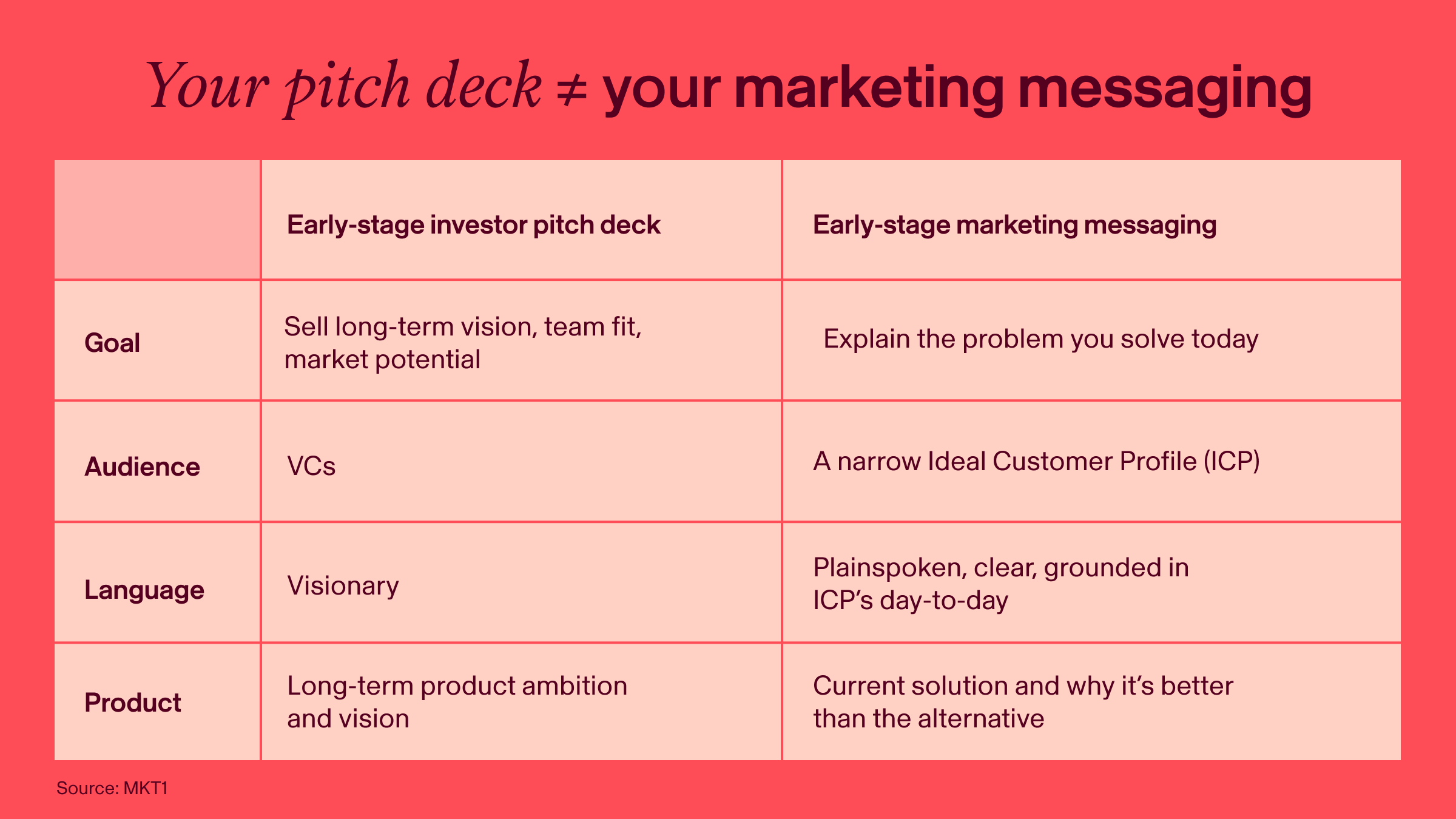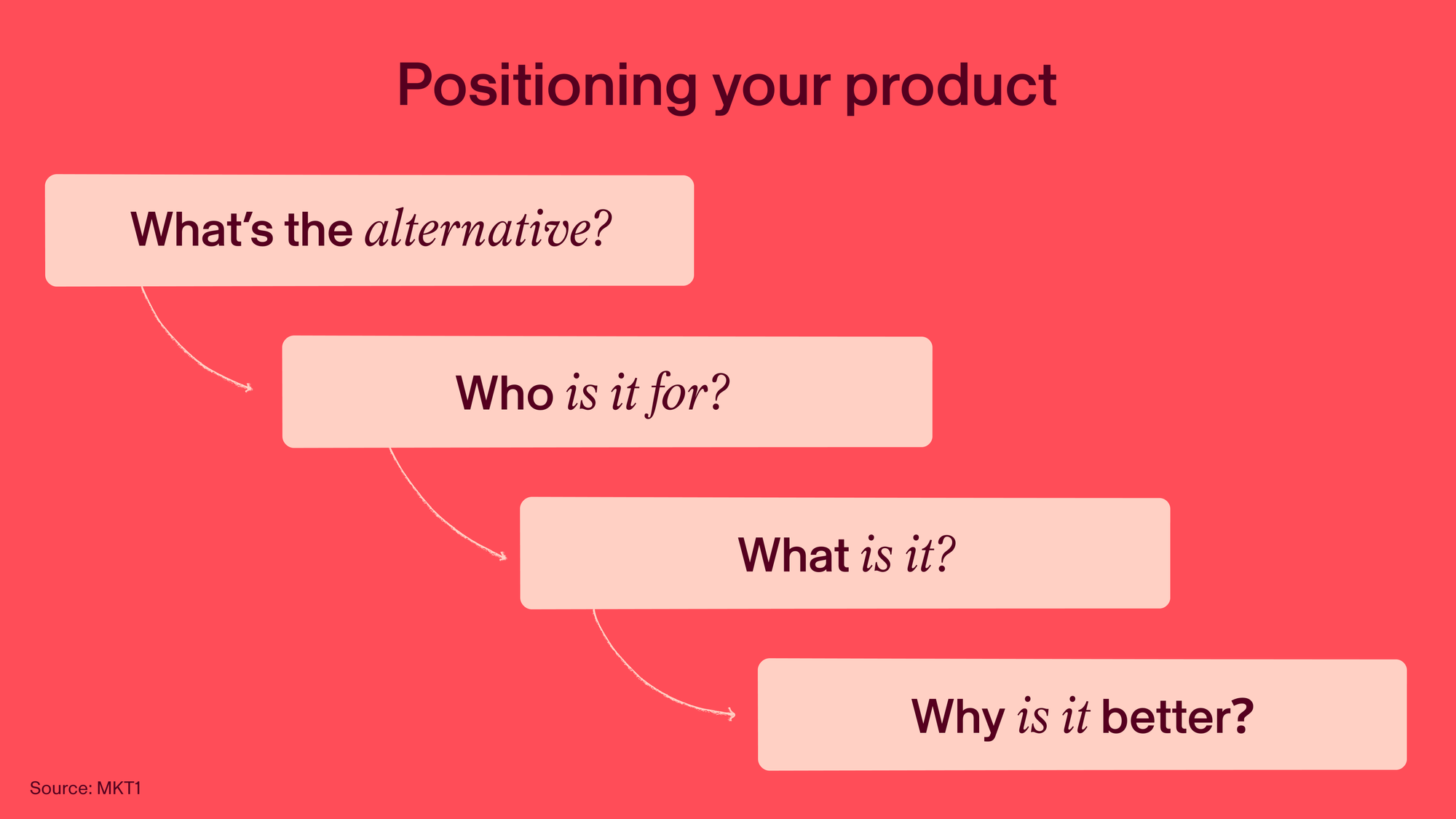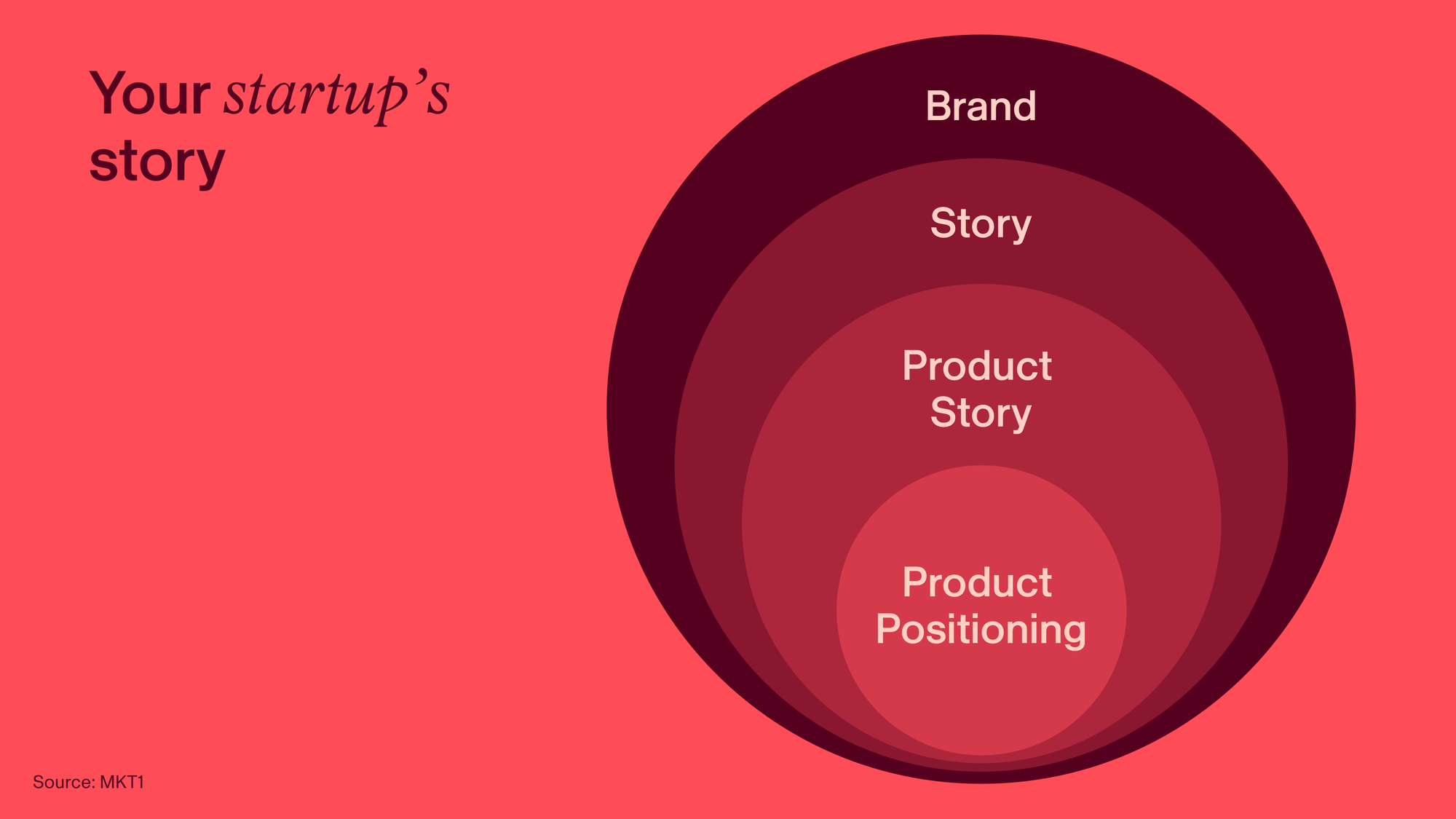This article is written by Emily Kramer, a B2B startup marketing advisor, author of the MKT1 newsletter and host of the Dear Marketers podcast. She previously led marketing teams at Asana and Carta.
When you’re raising your first round, you obsess over your pitch. You hone the story, the slides and how you sell the company to investors. But once the round closes and it’s time to go to market, too many founders try that same story to attract customers. That’s a mistake.
Investors and customers care about different things. A fundraising pitch should cover what’s important to investors: your big vision, your team’s unique ability to solve the problem and the market potential. But effective marketing, especially in the early days, needs to speak to a much narrower audience and a much more immediate pain. Your pitch deck might have helped you raise a seed round, but it won’t help you close your first 10 customers — unless you know how to translate it.
I’ve seen this mismatch play out again and again, as an investor reviewing hundreds of pitch decks as a GP at my previous fund MKT1 Capital, as an operator building and leading marketing teams at companies like Asana and Carta, and as an advisor to dozens of early-stage startups. Founders don’t need to become marketers overnight, but they do need to understand that getting your first customers and getting your first check require two different stories.
Here are my fundamentals for crystalizing your first B2B marketing messaging, including the positioning questions you need to answer upfront before you write anything. Plus: how to translate your pitch deck into copy for your website slide by slide, from the market size down to the team slide, along with examples for each one. Let’s dive in.
The problem with shipping your pitch deck
A great pitch deck makes for an ineffective website. It also makes terrible outbound copy. You can’t copy-paste that deck to your homepage because your prospects likely aren’t VCs. And even if they are, VCs look for very different things in software than they do investments.
Your deck is a high-level narrative arc. It’s meant to build belief in the market, your team and your timing. It’s meant to sell your vision, so it’s often aspirational (“Our platform will be the system of record”) and not grounded in what you’ve built today (a single feature).
Your deck speaks to an audience that cares about a VC-backed outcome, not an audience that is trying to easily solve a “job to be done.” Your prospects want a cost-effective, easy-to-implement solution to their immediate problem. Yes, your prospects care that your company will be there tomorrow. But they don’t want you to overpromise what the product can do for them today.
And lastly, your customers care about a broader range of things than VCs do in your pitch. Your marketing can and should tap into those broader topics, from emerging trends in their industry to helping them get better at their jobs. But unlike your pitch deck, your marketing is an opportunity to build credibility and drum up awareness and demand by talking about things your customers care about that aren’t just your product.

What your early B2B marketing story actually needs
Your early marketing is about telling the right slice of the story to the right people — clearly, consistently and repeatedly.
The temptation is to look bigger than you are, just like you do in your pitch deck. To speak to your entire TAM. To sound like a scaled company.
But your early advantage is focus. You can solve a very specific problem for a very specific audience better than anyone else. Lean into that. Don’t work against yourself by trying to appear like you solve everything for everyone.
Here are three ways to focus your marketing messaging:
- Pick a wedge or beachhead. The narrower and more urgent the problem, the easier it is to win. You may be building a broader product now or later, but you still need to start with a narrow GTM audience and message — even if you’re testing a couple targeted audiences at a time.
- Speak directly to your audience. Make people feel like your product was tailor-made for them (and not for everyone). Echo what you heard in discovery calls. Speak your customer’s vernacular, not VC lingo.
- Don’t copy the messaging of later-stage companies. You’re not Stripe, Airbnb or Figma. No one knows what you do yet. You need to spell it out clearly.

Write clear positioning to shape your customer-facing product story
Before you write anything customer-facing, whether for your homepage, your sales deck or any other early marketing asset, you’ll need to hone your positioning internally.
This is where my positioning framework comes in. Answer these four questions in the language your customers speak to build a foundation for your website:
1. What’s the alternative to using your product?
Explain why using your product is better than the alternatives, which could be:
- Building it internally
- Using a mix of tools and homegrown solutions
- Using an incumbent product
- Using a horizontal, non-purpose built tool
2. Who is your product for?
Get specific and stack rank or tier potential ICPs, and use language they would use to describe themselves.
Don’t say: “Distributed knowledge workers.”
Do say: “Fully remote employees.”
3. What exactly is your product?
Describe it in plain English. Be clear, not clever.
Don’t say: “AI-powered revenue design.”
Do say: “Manage your business mail online,” “Scale B2B support” or “The AI code editor.”
4. Why is it better than the alternative?
Pick the high-level reason your product is better than what the majority of your initial ICP(s) will compare it to.
Don’t say: “Unlike competitors, we offer XYZ and ABC.”
Do say: If the alternative is building internally: “Save months building X yourself.”
If the alternative is a mix of internal tools and expensive service providers: “Save $X in annual legal fees.”

Your marketing story is bigger than your product story
Positioning covers your core product message: who it’s for, what it is, why it’s better. But your marketing story should extend beyond just your product.
So in addition to writing clear positioning, choose three to four narratives you want to focus on that speak to your audience. These can be related to market trends, what your customers have in common, your founding story or a unique insight or contrarian view you have.
I call these narratives perceptions. Your perceptions may be adapted from slides in your pitch deck, like your “why now” and “vision” slides, but they’re geared toward the perspective of your customers. Focus on movements and trends your customers actually care about, rather than what excites investors.
Here are some examples of how you might describe those narratives:
- “Usage-based pricing will increase our revenue over subscription-based pricing.”
- “I can build products now, even though I can’t code.”
- “Diagnostic errors occur all the time in medical images read by humans.”
Your early marketing story should accomplish these four things:
- Hook people fast. Lead with the customer’s pain and explain how you solve the problem.
- Assume zero context. Explain what you do in plain language.
- Speak to your beachhead users. This isn’t your total addressable market, or every potential use case. Just highlight the most urgent, obvious one. This is how you win over competitors.
- Prove it. Even if you’re early, use real quotes, early traction and your team’s credibility to build trust. Not just in one call out section, but across everything you do.
You’ll get to your big vision, your defensibility, your five-year roadmap eventually. But only if you can clearly explain what you do today and why someone should care today.
You’re not in a pitch meeting. Your website is sitting open in your customer’s tab next to 10 others.

Translating your pitch deck slide by slide
Your marketing story comes from the same foundation as your pitch deck. But it has a different job.
Here’s how you can directly adapt your pitch deck into your marketing messaging on your website, building off of the positioning and narratives you’ve developed.

The problem slide
- Purpose in the pitch deck for investors: The medium-term pain point and why what you’re building matters.
- How to translate it into customer-facing marketing messaging: Focus on the customer’s pain point today.
- Where it should live on your website: Use this language in your homepage hero. Lead with copy that evokes “we get your pain, and have a solution.”
- Common mistake: Writing about the problem too generically or abstractly, not connecting to real customer pain, or alienating your target audience by calling out their shortcomings.
If your pitch deck says: “Radiologist-read medical images are frequently misinterpreted, leading to missed or delayed diagnoses.”
Your website might say: “Reduce diagnostic errors.”
The solution slide
- Purpose in the pitch deck for investors: Describe what you’ve built and your unique POV on the solution.
- How to translate it into customer-facing marketing messaging: Focus on what your product does for your ICP right now.
- How to adapt for your website copy: Make it super clear what your product does in your homepage hero — assume no one has any idea.
- Common mistake: Repeating vague pitch language or trying to be too clever and name a category on day one, instead of explaining what it actually does in concrete, familiar terms.
If your pitch deck says: “Compliance and security management platform, starting with SOC 2.”
Your website might say: “SOC 2 audit platform.”
Vision & why now slide
- Purpose in the pitch deck for investors: Inspire belief in a big future and show why this moment is the right time to build.
- How to translate into customer-facing marketing messaging: Connect your product to a broader movement or emerging shift customers want to be part of.
- Where it should live on your website: Include in your About page, company story, or founder’s note, not front and center.
- Common mistake: Leading with the vision or an overly academic take on the market before you explain basic positioning.
If your pitch deck says: “We’re simplifying global trade — in a time of tariff confusion.”
Your website might say: "We manage the customs process for everything you ship.”
Market size slide
- Purpose in the pitch deck for investors: Prove the opportunity is big enough to be venture-scale, imply that this market is massive and growing.
- How to translate it into customer-facing marketing messaging: Messaging should feel targeted and personalized, and imply “This is for you.” Don’t talk to the whole TAM, talk to your beachhead users.
- How to adapt for your website copy: Make it clear who your product is for throughout the website.
- Common mistake: Assuming prospects already know the product is for them, or trying to speak to everyone to increase your chances of getting customers. Speaking to everyone has the opposite effect.
If your pitch deck says: “We’re targeting remote-first and hybrid companies globally.”
Your website might say: “Built for early-stage remote startup teams.”
Competition slide
- Purpose in the pitch deck for investors: Show awareness of your landscape and how you’re different.
- How to translate it into customer-facing marketing messaging: Highlight your differentiators, and only mention competitors where necessary.
- How to adapt for your website copy: Make it clear how you fit with other tools your audience uses and show why your product is better than the alternative. Use comparison pages, customer stories on switching products and sales-specific content (like battle cards) to get precise on differences compared to a single competitor.
- Common mistake: Obsessing over direct competitors, instead of explaining what you do and why you’re a better choice for your selected audience.
If your pitch deck includes: A 2x2 visual of video editing software
Your website might say: “We’re the only multi-player video editing platform.”
How the product works slide
- Purpose in the pitch deck for investors: Demonstrate your product works, is feasible and has a clear roadmap.
- How to translate it into customer-facing marketing messaging: Explain how your product works for your early adopters, and don’t market or sell too far ahead from what’s built.
- How to adapt for your website copy: Create a product tour, “How it works” sections, feature pages or demo video.
- Common mistake: Hiding how your product works until a sales demo. This only creates friction and slows discovery.
If your pitch deck says: “We’re building an AI engine that automates post-client call workflows, starting with X workflow. Here’s our roadmap.”
Your website might say: “Step 1: Records clients calls, Step 2: Writes and tags notes, Step 3: Sends them to your other tools automatically”
Business model & GTM strategy slide(s)
- Purpose in the pitch deck for investors: Prove you can make money and reach the market efficiently.
- How to translate it into customer-facing marketing messaging: Make it obvious how to buy the product.
- How to adapt for your website copy: Make a packaging and/or pricing page, even if it’s basic. Buyers look for this. Use clear CTAs throughout the website that set the right expectation.
- Common mistake: Being opaque about your pricing and packaging. Prospects will find this info regardless, so it’s better to control the message.
Don’t say: “Get started today” if it takes a week to book a demo and a month to onboard.
Instead, say: “Talk to sales” or “Request a demo.”
Traction slide
- Purpose in the pitch deck for investors: Show progress, demand and momentum.
- How to translate it into customer-facing marketing messaging: Weave social proof into as much of your marketing as possible. Don’t just add one quote to one page.
- How to adapt for your website copy: Integrate (authentic) social proof throughout your website. On your homepage, show quotes and logos.
- Common mistake: Thinking you’ve checked this box after making a logo wall, and not adding customer perspectives into everything you do.
Team slide
- Purpose in the pitch deck for investors: Convince investors your founding team is the best suited to build and win.
- How to translate it into customer-facing marketing messaging: Build trust by sharing the team's credibility, values and voice.
- How to adapt for your website copy: Include this on your “About” page, and use founder voices to kickstart content and social efforts. But don’t make the homepage about you. Make it about your prospects.
- Common mistake: Over-indexing on resumes and credentials, without showing why you’re able to solve customers’ problems.
Ask & use of funds slide
- Purpose in the pitch deck for investors: Tell investors what you need and what it unlocks.
- How to translate it into customer-facing marketing messaging: Fundraising history shouldn’t be the primary message you share with your prospects.
- How to adapt for your website copy: If you mention your fundraise, use it as a hook to show how the new money unlocks something directly valuable for your audience, such as new features.
- Common mistake: Blasting your fundraising announcement everywhere, which makes it about you, not what your new cash means for customers.
A pitch deck is a great forcing function to think about your story and start compiling assets that will be useful in marketing. But you need to take a few extra steps to make it ready for prospects and customers.
The great news is you can do this on your own, most likely without a marketing hire. Just use clear language and get real buy-in and feedback from real people in your ICP.
